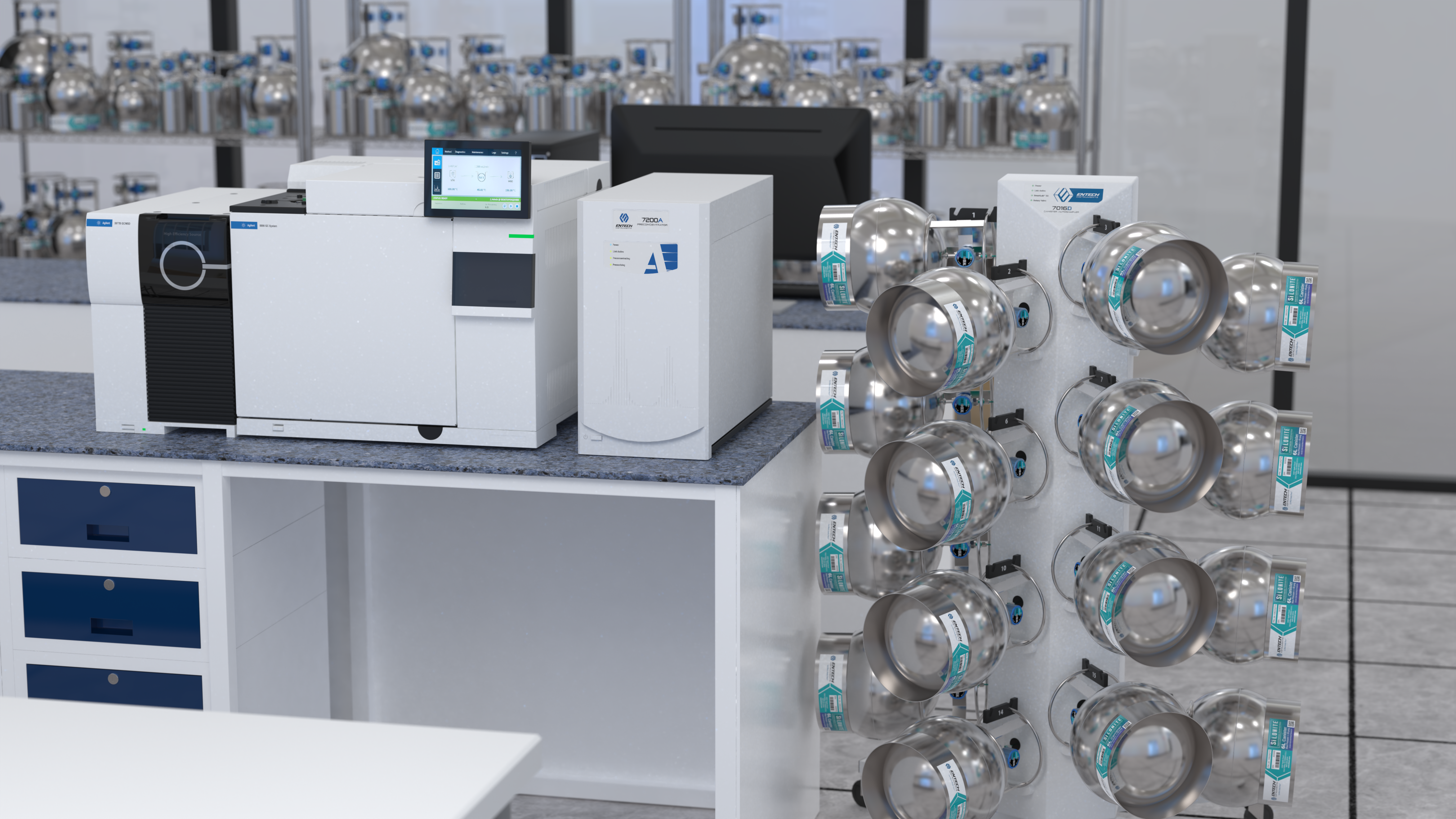
HON Compliance Workshop Recap: Why Pilot Studies Matter Now
May 6, 2025
By: Jenna Granstra & Bryan Tyler
Recently, our lab testing and air quality monitoring experts joined industry leaders, regulators, and facility stakeholders at the Air & Waste Management Association (A&WMA) HON MACT Compliance Workshop in New Orleans. The workshop centered around the evolving requirements of the HON MACT rule, which is designed to reduce hazardous air pollutants (HAPs) from chemical manufacturing operations — protecting public health and the environment by tightening emissions standards across key facility components such as flares, pressure relief devices, and storage tanks.
While the Environmental Protection Agency (EPA) announced a compliance extension on March 12, 2025, the rule’s long-term goal remains unchanged: to strengthen accountability and improve real-time visibility into toxic air releases, especially at the fenceline.
With increasing scrutiny on air toxics and fenceline emissions, the sessions reflected a shared urgency: even with extra time, facilities can’t afford to hit pause. Instead, the focus is on staying proactive, addressing the gaps left by passive-only systems, and using pilot studies as a strategic advantage.
In this blog, we provide a recap of key themes and takeaways from the event, drawing on insights from our pilot projects and contributions to discussions at the workshop focused on best practices for air monitoring, real-time data strategies, and root-cause response under the evolving HON MACT rule.
Major Regulatory Shifts: Lessons from the Keynote
The keynote speaker kicked off the conference with a powerful reminder of how quickly and dramatically regulations can reshape operations. They emphasized the significant impact of the Refinery Sector Rules (RSR), marking the most substantial regulatory changes since the Consent Decrees introduced in December 2015. These decrees aimed to reduce hazardous air pollutants (HAPs) from petroleum refineries by imposing stricter emission standards and enhancing monitoring practices. With the implementation of RSR surpassing $275 million in costs and annual compliance expenses exceeding $60 million, these hefty financial commitments highlight the critical need for proactive navigation of evolving regulations. Failure to address key emission events can result in costly investigations, operational disruptions, and severe enforcement actions.
Several major lessons from RSR were shared to guide facilities preparing for HON MACT compliance:
- Flares: Net Heating Value standards have transformed operations, requiring investment in calorimeters, updated control systems, and new equipment like flare cameras.
- Pressure Relief Devices: Facilities have to rethink operating procedures, training, and alarm systems, with unexpected regulatory interpretations like the elimination of DOR flexibility.
- Maintenance Vent Provisions: New thresholds for lower explosive limit (LEL), pressure, and VOC mass demanded extensive planning to meet safety and reporting requirements.
- Fenceline Monitoring: This represented a major cultural shift, requiring facilities to rethink monitoring strategies, invest in vendor partnerships, and develop smarter data collection plans.
Key advice from the keynote included starting flare control conservatively, treating Flare Management Plans as living documents, and thinking long-term when designing fenceline monitoring programs.
Real-Time Monitoring: Closing Gaps Left by Traditional Fenceline Monitoring
A major theme throughout the workshop was the limitations of traditional monitoring methods like M325 and M327. While still foundational for compliance, these methods can miss important events due to meteorology, slow sampling intervals, and the challenge of capturing intermittent emissions.
Real-time monitoring technologies — were spotlighted for their ability to:
- Deliver faster, more detailed data
- Pinpoint emission sources during facility surveys
- Support root-cause analysis after exceedances
- Provide alternative testing paths that offer regulatory flexibility
Facilities were reminded that when passive data triggers an action level exceedance, real-time monitoring becomes mandatory if the root cause isn’t identified within 30 days. Fast mobilization, such as deploying mobile labs, can make a critical difference in maintaining compliance timelines.
Ultimately, there’s no “one-size-fits-all” approach. Facilities should tailor real-time monitoring strategies to match site layout, emission types, and monitoring goals.
Keep the Momentum: Why Pilot Studies Are More Important Than Ever
Although facilities subject to the HON MACT rule were recently granted a compliance extension, several sessions emphasized that now is not the time to slow down. Facilities that completed Information Collection Request (ICR) monitoring found that passive-only programs often missed key emission events, like leaking benzene tanks.
Those that immediately moved into pilot studies using mobile gas chromatographs (GCs) and installed onsite meteorological towers gained major advantages:
- Identifying additional sources of concern
- Collecting real-time, time-resolved benzene data
- Sharpening root-cause response processes ahead of official compliance timelines
Continuing pilot studies now allows facilities to practice working under tight regulatory deadlines, refine their site-specific monitoring plans, and ensure faster corrective actions when needed. Just as importantly, these early efforts help establish critical baseline emissions data—giving facilities a reference point for long-term compliance tracking, performance evaluation, and root-cause investigations.
An extension isn’t a pause — it’s a head start. Facilities that stay proactive with pilot programs today will be far better prepared to meet compliance requirements tomorrow. If your team is navigating compliance challenges, now is the time to assess your monitoring approach. Consider piloting real-time tools, determine if you need a site-specific monitoring plan, or connecting with experts who can help interpret evolving requirements.
How We Can Help
The HON Compliance Workshop made one thing clear: regulatory expectations are intensifying, and passive monitoring alone won’t cut it. Real-time data, early pilot studies, and flexible response strategies are quickly becoming the new standard for staying ahead.
As experts in leading multiple HON MACT pilot projects, we have gained valuable insights into optimizing monitoring strategies for facilities navigating evolving regulatory landscapes. Our early field studies highlight the critical role of combining passive and real-time monitoring to ensure full compliance. Tools like mobile canister collection and advanced real-time systems enable faster emission detection and response, boosting both regulatory performance and operational efficiency. We also offer rapid-response monitoring to support root cause investigations and the development of site-specific monitoring plans. These proactive strategies not only support regulatory requirements but also enhance operational efficiency and promote environmental stewardship. Facilities that act on these insights are better positioned for long-term success.
 Meet our Experts
Meet our Experts
Jenna Granstra
Project Manager and Gulf Coast Ambient Operations Leader
Jenna is a Project Manager and Gulf Coast Ambient Operations Leader at Montrose with over a decade of experience managing large-scale air monitoring programs. She specializes in fenceline and community air monitoring, data analysis, and quality assurance.
 Bryan Tyler
Bryan Tyler
Vice President at Enthalpy Analytical
Bryan is the Vice President at Enthalpy Analytical with over 20 years of experience in sales and client services within the manufacturing and services industries.


